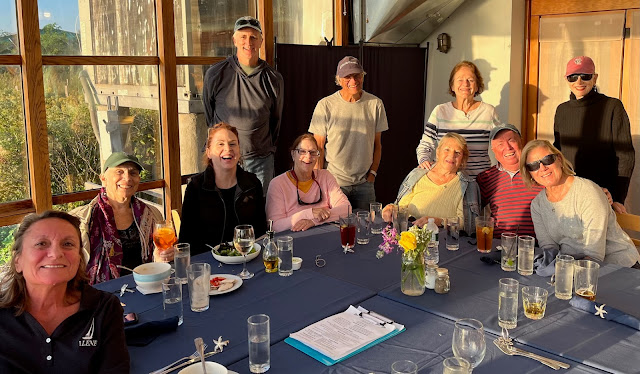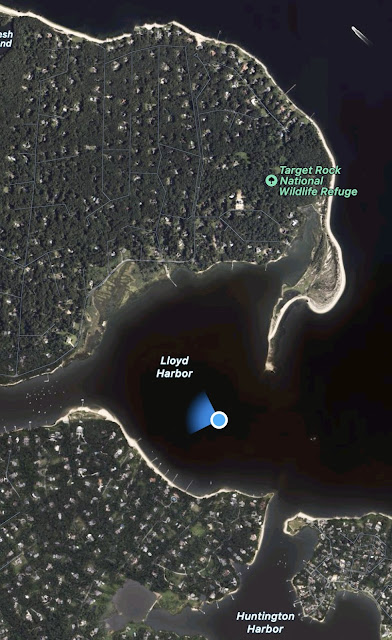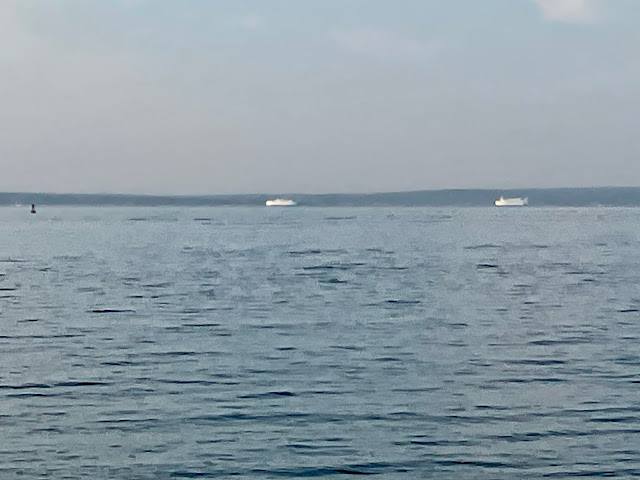The story of the week has been rain. Only one clear day. The salts outing had to be adjourned. String but not unduly strong wind threatened the Harlem fleet but we were spared. Lene and I had planned a dinner with her brother and nephew, part of a plan to use up some of the required minimum restaurant bill, but the Club was closed and the road to City Island impassible except for vehicles with extra large wheels.
I was very worried about the watermaker. It is supposed to be flushed every five days and we had been unable to do this. Such flushing, with fresh water, required the machine to turn on when a button was pushed. But pushing had no effect. It will require cleaning of its innards with both an acid and a base cleaner, before it will resume turning seawater into drinking water through reverse osmosis. But I don’t foresee the need to make water during the period we will continue to own ILENE. The more pressing issue was the need to replace the seawater in it with pink propylene glycol antifreeze, to prevent it cracking during the winter freeze. The installer and repair firm is in Newport RI and had worked with us this summer but to no avail. I was losing sleep with worry over the fate of this expensive piece of equipment. I called many potential repairmen who turned me down for one reason or another. Finally, Lene suggested I call Ed Spalina, who had helped me with so many problems over the years. Ed is always a pleasure to work with, comes quickly when needed and charges an hourly rate so low that I always pay him a lot more than he asks. He is not a “certified” or an “authorized” repairman for Yanmar diesels, Raymarine electronics, or Spectra Ventura water makers. But with expert mechanical skills he figures out how to do it and gets the job done. He came on the same rainy day I called him and within a few hours had read the manufacturer’s manual, skipped a step, and used a manual on-off switch instead of the button. The job is done! I saw the pink antifreeze coming out of the salt water discharge into the sea with my own eyes. The filters were removed and the body of the machine is full of antifreeze. I got a good night’s sleep. Thanks again, Ed, you are a lifesaver.
I completed reading and wrote my book report on “The Wager” by David Grann. (He is also the author “Killers of the Flower Moon” about the murders of Native Americans who were getting wealthy because they had been placed in a reservation which was located above a rich oil deposit. A movie with a lot of big name starts will be coming out in the next few months and no doubt The Wager will also be filmed because of the huge amounts of characterization and action.)
The Wager will be discussed at by Book Group next week. It is the non fiction story of an ill fated expedition by the British Admiralty in the 1740’s to attack and capture a Spanish ship loaded with the riches the Spanish had plundered from the orient. It describes the construction fitting out, provisioning, manning, navigation, operation, and fighting of wooden ships of war in easy to read and understand chapters. Many men died in storms and of diseases, including scurvy before The Wager was shipwrecked on an island on the coast of Chile. More of the castaways died on that island, which they called Wager Island from starvation, disease etc. There was a massive “Lord of the Flies” style loss of social order. There were factions including some loyal to the Captain and others who sided with the Gunner in Mutiny. Both sides and others maintained extensive diaries which became the source materials of Historian Grann. They believed that if they made it back to England, (a lot more men died on the Island and on the way back) these diaries would prove that they were right and save their lives at the inevitable court martial. If you like sea stories, you will enjoy The Wager.
















































